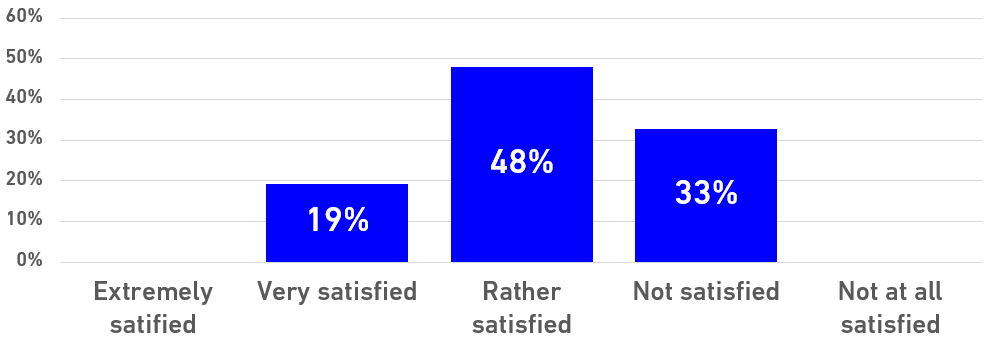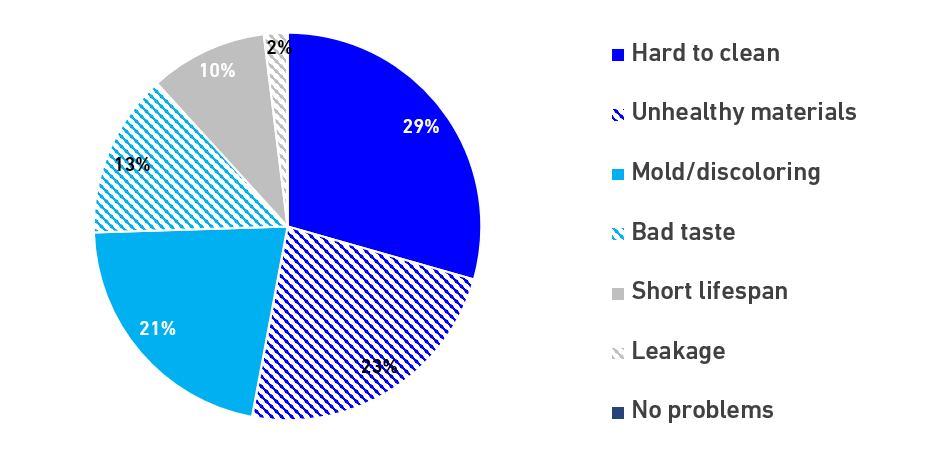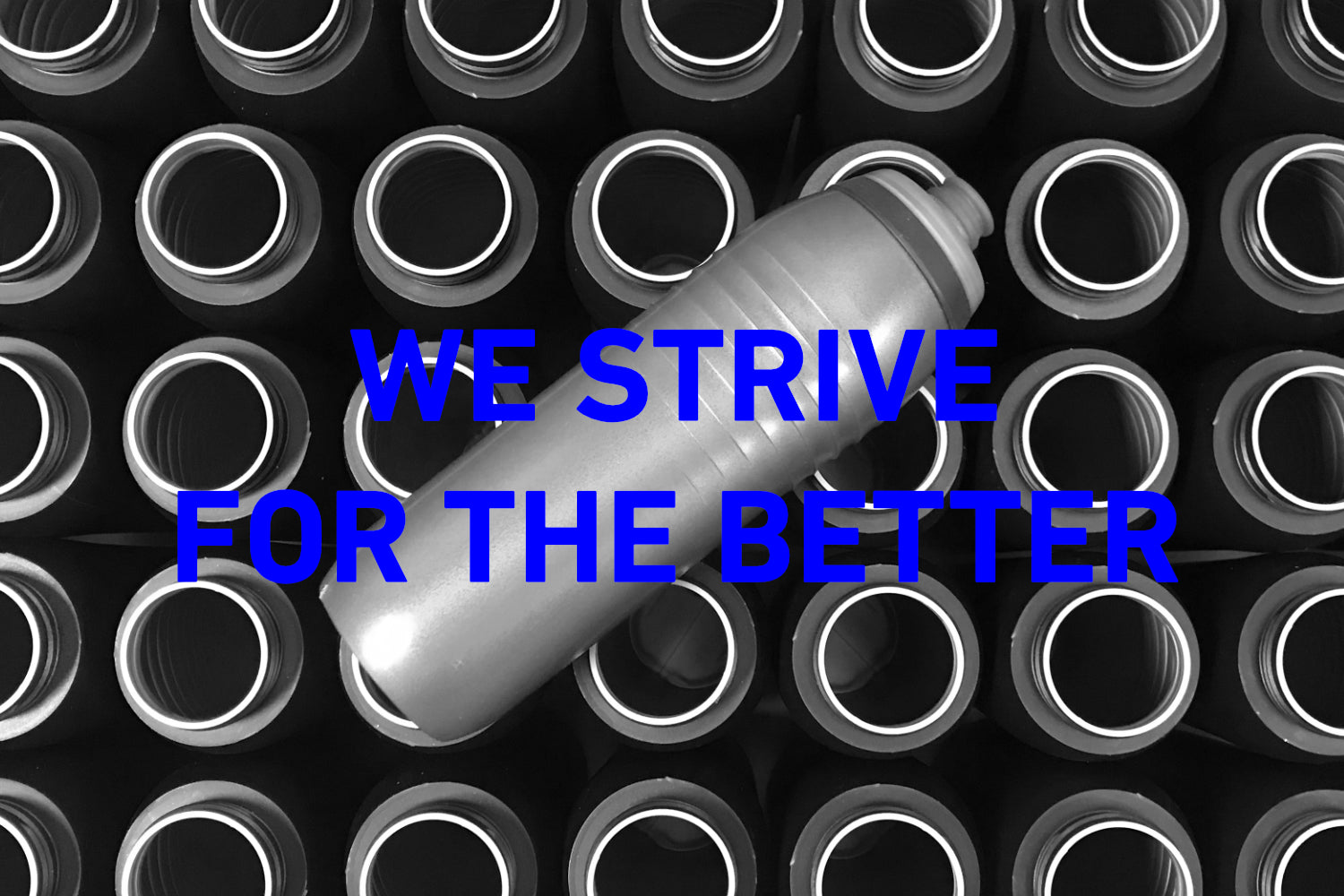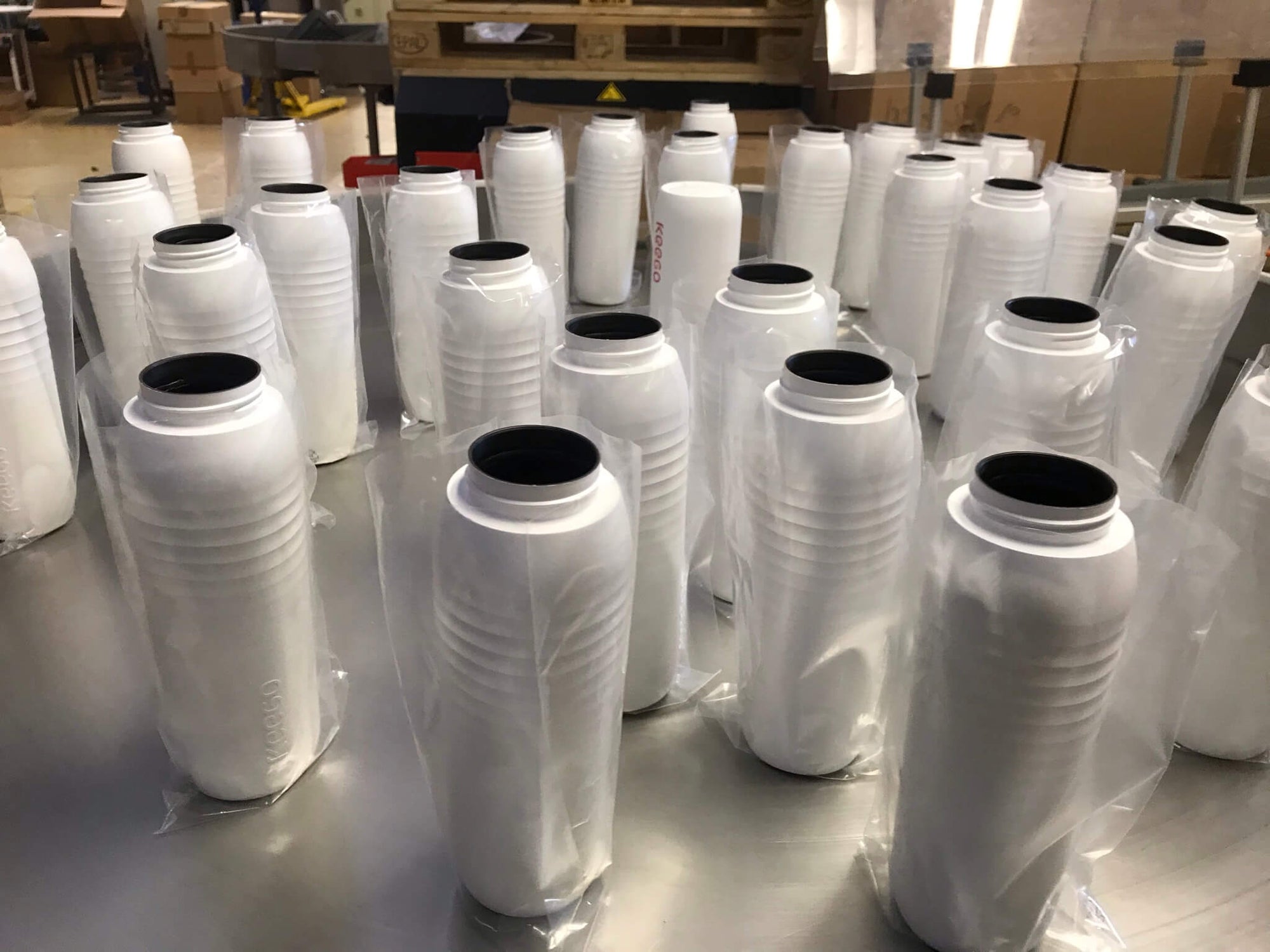They come in many shapes and colors. But they all have one thing in common - they are indispensable for sports: water bottles.
On our mission to develop the best water bottle in the world, we keep encountering exciting objects - from the origami bottle to the mini bottle (200 ml) that attaches to a bracelet around the wrist. But what really counts is what the best have to say about it.
That's why we asked 52 cycling teams from Germany and Austria what they think about water bottles in sports. You can read what they had to say here.
WE REMAIN THIRSTY
Initially, the aim was to get an overview and ask the athletes about their satisfaction with the current range of sports bottles out there.

Only 19% said they were "very satisfied" with the offer. 48% of those surveyed were only "somewhat satisfied".
Although this is a good start, there is still plenty of room for improvement!
And what about the 33% who said they were "less satisfied"? The question of "Why" arises.
But first of all: which bottles are actually used?

Of the 52 teams surveyed, 30% said they used Elite bottles, while 24% named Tacx as the brand used in their cycling club.
This puts Elite and Tacx at the forefront, closely followed by Camelback.
The two frontrunners, Elite and Tacx, are not only popular with cycling clubs, but also at the Tour de France - eleven of the 22 participating teams ride with Tacx, nine with Elite (and a very special one for Alaphilippe at this year's Tour de France).
It is also interesting to note that 11% of cycling clubs actually use promo bottles. In our humble opinion, this leaves a lot of room for improvement.

Next question: What are the 3 most important features of a sports bottle?

For 21% of cyclists, it is extremely important that the bottle is easy to clean, closely followed by the healthy materials from which the water bottle should be made. Together with Taste , these Taste clearly the three most important aspects of a bottle.
Last but not least, the question of thebiggest disadvantage ofthecurrentlyavailable squeezable bottles.

29% of respondents cited cleaning as the biggest disadvantage.
For 24%, unhealthy materials are a no-go, and 22% complain about mold growth and/or discoloration Taste their water bottles.
One of the most frequently mentioned (14%) disadvantages of conventional sports bottles is the fact that they tend to Taste a certain Taste and alter the Taste liquid inside.
Conclusion: The responses show us that KEEGO is exactly what we need.
Thanks to titanium, our water bottles are not only easy to clean, but also prevent mold growth, guarantee a pure Taste drink, and are a sustainable alternative to conventional plastic bottles thanks to their durability.

A great result that motivates us to keep going.
Welcome to team KEEGO!

